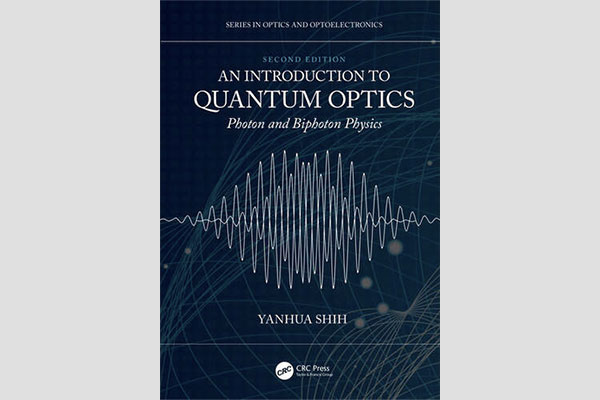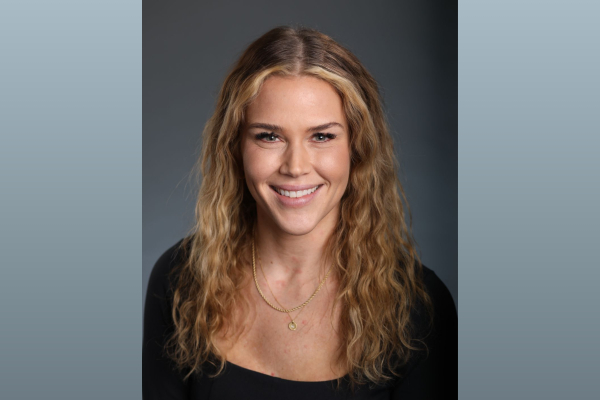By Ryan Aguinaldo
In the six decades since the first studies on the quantum theory of optical coherence, quantum optics has rooted itself as a firmly established field of pure and applied physics. This is evident as one looks at the sheer number of introductory texts on quantum optics appearing in recent years at both the undergraduate and graduate levels. When a new, or in this case, updated, textbook appears on such a mature subject, it is often the case that the author looks to present topics that are omitted elsewhere, emphasize or deemphasize topics covered in other books, or provide a more pedagogically focused presentation. Each of these points are targets for Shih’s latest edition of An Introduction to Quantum Optics.
This textbook is aimed at beginning graduate students to quickly get them up to speed in quantum optics and contributing to research. While undergraduate electrodynamics is sufficient, a first term in graduate quantum mechanics would probably help ease the beginning student into the level of mathematics used by Shih. With the intended audience in mind, Shih takes a somewhat unique back-to-basics approach in the first several chapters. The first chapter as an entirely classical description of time averaging of the optical intensity, intensity fluctuations, modal interference, and the associated use of Fourier analysis. Here, the concepts and notation are useful in easing the reader into the correlation (i.e. coherence) functions that are later introduced in Chapter 4 and used thereafter throughout the remainder of the text. The first chapter then ends with a quick derivation of the historical Rayleigh-Jeans law, which of course gave the beginning twentieth century the ultraviolet catastrophe thus necessitating the development of quantum mechanics.
Continuing with his back-to-basics approach Shih uses his second chapter to review blackbody radiation and the photoelectric effect. The chapter ends with the usual canonical quantization of light; however, Shih takes the time, albeit a brief moment, to justify the use of the harmonic oscillator solution by the fact that it is the atomic energy levels which correspond to that solution and that only once we have quantized energy levels can we associate transitions between those levels with the electromagnetic field energy. This is a subtle, yet fundamental, point often missed in many books. Eleven of the remaining twelve chapters more closely align on topics at the core of contemporary quantum optics (the outlier is a brief review of classical diffraction and imaging in the context of the mathematical tools developed earlier in the book).
Another example of Shih’s pedagogical approach is the way he builds up each of the core chapters in the first half of the text. Each chapter follows the same frame of first beginning the discussion from a classical continuum (Maxwell) picture, then from a granular but not-yet-quite-quantum (Einstein) picture, then finally from a fully quantum perspective. This approach may be slow for some readers but may add clarity for others. The so-called Einstein approach is somewhat idiosyncratic; it is based on decomposing the field into “sub-fields,” which emanate from “sub-sources,” thus making connection with Einstein’s notion of discrete “bundles of rays” (photons in modern parlance). This reviewer asserts that the same procedure could rather be interpreted in the context of Huygens’ principle of secondary wavelets, which makes for a less compelling buildup for quantum optics; however, this subtlety does not affect the point that Shih looks to pedagogically build up the reader’s comfortability with classical and quantum coherence theory carefully and methodically.
After an obligatory early chapter reviewing various types of states (number, coherent, pure, mixed, entangled, etc.) within the context of quantum optics, Shih reaches the core of his book with four chapters carefully detailing all aspects of optical coherence. First- and second-order coherence functions are first introduced through the analysis of photodetection events before they are further elaborated in each of their own chapters. Discussions of temporal and spatial coherence are woven throughout. Additionally, a general model of light is presented in terms of various combinations of coherent and incoherent superpositions of Einstein subfields and Fourier modes.
The remaining half of the book utilizes the mathematics developed to that point to analyze various topics in quantum optics including entanglement, two chapters on two-photon interference, two-photon and second-order imaging, and optical experiments exploring the foundations of quantum theory. These chapters carry both the theoretical foundations expected from an introductory graduate text as well as a strong experimental focus. Indeed, Shih contributed to many of the experiments described in these sections over the past thirty-some years. This gives the reader a good first-hand account of the key experiments as well as challenges in performing such measurements.
With Shih’s emphasis on pedagogical foundations and quantum interferometry and imaging, there are a number of topics that are deemphasized or outright omitted. Admittedly, even as mature a field as it is, there is not always agreement whether a topic belongs to quantum optics or another area such as nonlinear optics, laser physics, or atomic physics. With that in mind, Shih has omitted anything that could be construed as belonging to any of the aforementioned topics including dissipation and decoherence, resonance fluorescence, cavity quantum electrodynamics, distribution functions based on the density matrix, laser cooling and trapping, and quantum information. Even end-of-chapter problems are missing, which is unexpected for an introductory textbook. One curious omission is any discussion on squeezed states. This is even more puzzling as Shih includes a very brief chapter on heterodyne and homodyne detection. This chapter is wanting of a connection to squeezed states; however, as organized, this chapter has little connection to the rest of the book.
The book’s subtitle, Photon and Biphoton Physics, is aptly chosen. Especially considering the book’s latter emphases on two-photon interferometry and imaging, one may get the feeling that Shih’s definition of quantum optics is the physics of biphoton states. This theme is repeated throughout the book to aid in understanding. In fact, Shih attempts to resolve the controversy caused by Dirac when he made a passing comment in his quantum mechanics textbook that photons don’t interfere with each other, they only interfere with themselves. Shih’s resolution is that Dirac is correct (of course!), but that the word photon in Dirac’s statement can be replaced with the word biphoton. Essentially that two-photon interference is the interference of the amplitude of the biphoton state, not the interference between two different photon states.
Instructive pieces such as the foregoing and others mentioned above alone make this book well worth a read. Those looking for detailed and carefully laid out derivations of correlation functions and applications to two-photon interferometry and quantum imaging will find this book invaluable. Those looking for topics omitted here but that are usually found in quantum optics books will necessarily have to avail themselves of those other references; however, they may still find Shih’s alternative presentations of the fundamentals and experimental perspective to be enlightening.




